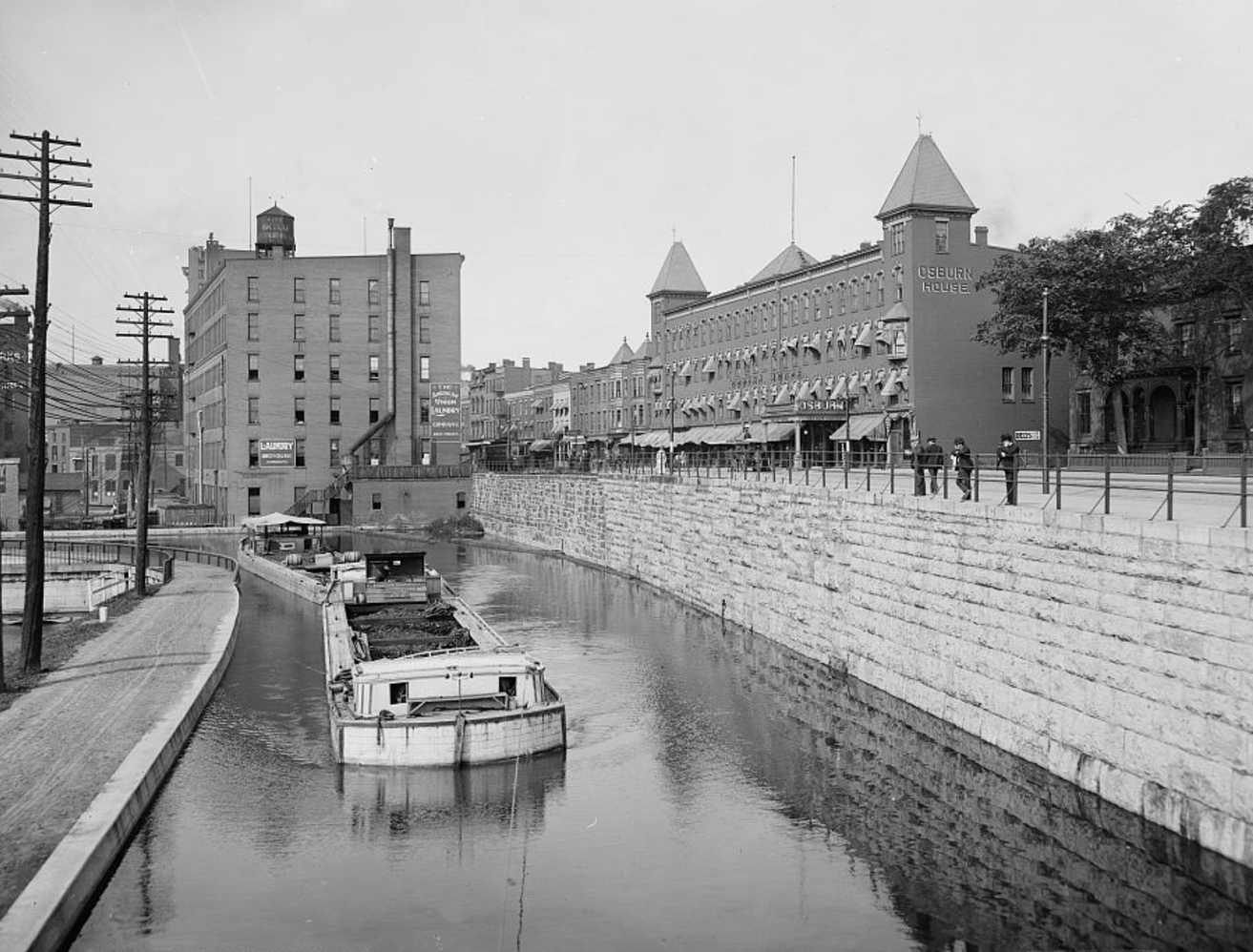
Niagara Falls and the Erie Canal
Even though Niagara Falls was not chosen as a terminus for the Erie Canal, the success of the city and canal are deeply connected.
From 1817 to 1825, U.S. and immigrant laborers built the Erie Canal for a dollar or less per day and without any formal training in engineering. The canal originally stretched 363 miles from the Hudson River in Albany to Lake Erie in Buffalo. Although the Erie Canal did not extend to Niagara Falls, the history and success of the canal, the city, and the famous cataract are deeply connected.
Jesse Hawley was first to publish a plan for a canal across New York State. He was a Geneva merchant who shipped flour to market in New York City. Travel in those days was costly, difficult, and time-consuming. When, in April 1805, Hawley expressed to a supplier that a canal could connect various waterways in the state, the supplier said it was impossible because there was no supply of water to keep the canal filled. Hawley stared bewildered at a state map until he saw Niagara Falls and instantly realized that Lake Erie could be that supply. In 1807 and 1808, he published a series of fourteen essays that detailed his plans for the canal. His friends and readers ridiculed him.
While Niagara Falls inspired Hawley, others questioned whether the canal should route to Lake Erie or circumvent the Falls to Lake Ontario. In 1816, meetings were held statewide to address the debate. At stake were issues of safety, cost, and commerce. Many believed that the Ontario route was impossible because of the solid rock along the Niagara River. Others were concerned about competition with Canada.
Even though the Erie route prevailed, the canal had a tremendous impact on Niagara Falls. The Erie Canal opened the city to “trade, industry, and tourism on a large scale,” stimulating both its population and economy. From the 1820s to the early 1860s, Niagara Falls was a major tourist destination for the middle class who could now travel easily and inexpensively on the canal.
Across New York State, the Erie Canal provided escape routes and safe houses for freedom seekers on the Underground Railroad. It conveyed abolitionist newspapers and pamphlets marked for national distribution. Along the canal towpath, Harriet Tubman, Sojourner Truth, and Frederick Douglass connected with one another. The Erie Canal helped freedom seekers get to Niagara Falls and the International Suspension Bridge where they could cross into Canada. Others stayed in the city and built new lives.
Erie Canal use declined with the popularity of the railroad. Today, it is mostly used by commercial vessels, canoes, kayaks, and pleasure boats. Congress declared the Erie Canal a National Historic Corridor in 2000.
Hope L. Russell, Ph.D.

